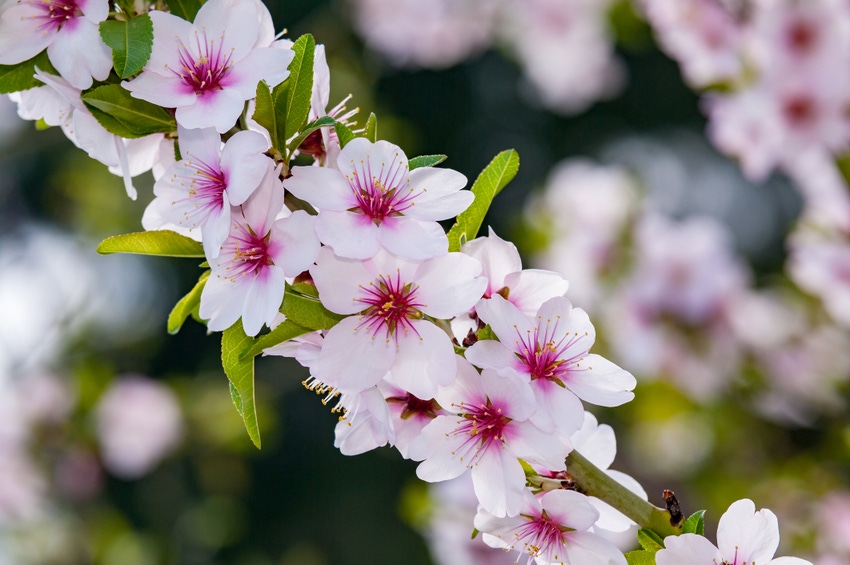
Determining nutrition budgets for the 2017 almond growing season could be a challenge.
While some University of California Cooperative Extension (UCCE) tree nut farm advisors have noted a drawn-out almond bloom in most growing regions, crop growth appears to be following the same pattern.
Justin Nay, crop advisor with Integral Ag. Inc. in Butte County says it can be difficult to estimate nitrogen (N) demand and plan N budgets this year due to the difficulty in estimating crop size.
“With the strange, drawn out bloom, it may be difficult to estimate crop size at many ranches since nuts are in various stages of growth.” Nay said. “Your eyes can play tricks on you and you only see the big nuts.”
For example, Nay showed a nut sample taken from Nonpareil trees on March 22 in Kern County. The range in size distribution reflected bloom length. On these ranches, he is watching for inadequate shoot growth or nut shedding as an indicator to deliver proper nutrition.
When making budgets for nutrient applications, Nay plans to look at crop yield history and factor in information from soil, water, and spring leaf analysis, and then adjust to the current crop load.
UCCE Merced County Farm Advisor David Doll’s strategy for determining total crop demand in pounds of N begins by taking expected yield and dividing it by 1,000, and then multiplying the figure by 62.
The next step is to subtract the N applied through water and adjust for leaf tissue analysis. April N concentrations in leaf samples exceeding 3.5 percent can allow a grower to omit a June N application.
To determine the application rate, Doll suggests subtracting the N in applied water from crop demand, and then multiply by 1.4. The application timing should be determined by the soil type, but more feed times are better than fewer larger feeds.
Doll notes that leaf tissue sampling should be conducted in April to determine N sufficiency, and in mid-July to determine the sufficiency of all nutrient levels.
In a PowerPoint presentation, Gabriele Ludwig of the Almond Board of California says validation data confirms July N needs could be predicted using April leaf samples.
However, every orchard and every year is a unique decision on fertilizer rates and timing. This year, given the inconsistent and drawn out bloom, estimating yield may be the most challenging part of formulating a nutrition budget.
Ludwig says the more times the N budget is re-estimated during the season then a better decision can be made to apply what’s precisely needed. The flexibility to correctly adjust in-season fertilizer plans decreases as the season progresses. In May, growers should review leaf analysis results and the updated yield estimate, and tweak the fertilization budget as needed.
Applications should be timed to match demand in as many split applications as practical with the reminder that 80 percent of N uptake occurs from full leaf out to kernel fill.
The application of the macro-nutrient potassium is another consideration. This nutrient does not impact nut size or percent of nut set, yet deficiency can result in reduced growth, spur longevity, and formation which can reduce floral buds and yield.
Doll notes that 70 percent of the season’s accumulation occurs by mid-June and uptake is not influenced by the nitrogen rate.
Potassium removal in an almond crop is documented in pounds of potassium, yet the product is sold in pounds of K2O. To convert to pounds of K2O, multiply the pounds removed by 1.2 to see an equal removal of K2O.
Potassium fertilizer sources include potassium chloride which is the least expensive and readily dissolved, but it adds chloride. Potassium nitrate at 44 percent potassium contains nitrogen, is water-soluble, and can be applied foliarly. Potassium carbonate at 64 percent potassium is also water soluble, but like potassium nitrate is expensive and can change the soil pH.
There are also different application strategies for this nutrient. Dormant applications can be made via in-season fertigation or foliar applications.
About the Author(s)
You May Also Like




